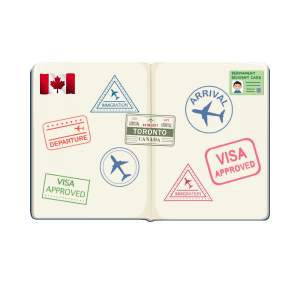This infographic delves into the evolution of workforce scheduling, highlighting key milestones from traditional paper-based methods and punch card systems to modern AI-driven solutions. It sheds light on the challenges faced along the way, such as data accessibility and system complexities. Ultimately, it underscores the efficiency and precision brought by AI-powered scheduling rules engines, cloud-based technology, and integration capabilities, providing a comprehensive overview of the past, present, and future of workforce scheduling.
Workforce Scheduling: Past
Paper Schedules
In the era of paper schedules, workforce management relied on the simplicity of a piece of paper and a pencil. Managers or HR departments painstakingly calculated working hours each month, meticulously ensuring that every employee received the correct number of shifts. These traditional schedules would be posted on a wall, and employees were required to manually note down their assigned shifts, a process that was both time-consuming and prone to errors.
Manual Attendance
Manual attendance tracking was once the prevailing method in workforce management. This hands-on approach required meticulous record-keeping, where employees were required to log their attendance manually. Managers and HR departments dedicated significant time to this process, meticulously calculating hours worked and ensuring accuracy. While it allowed for a tangible record, the method was labour-intensive and susceptible to errors, highlighting the need for more efficient attendance-tracking solutions.
Punch Cards
Work schedules were as analog as it gets in the punch card era! Each employee had their trusty punch card – a little piece of paper with holes that held their work hours. Clocking in and out meant literally punching your card. It was a manual dance between employees and the time clock, leaving a tangible record of hours worked.
Wall Calendars
Managers and HR personnel marked work schedules on physical calendars hanging on the wall. This visual and manual method often required employees to visit the calendar to check their shifts. While it provided a visible and communal scheduling platform, it had limitations regarding flexibility and real-time updates, requiring employees to make frequent trips to the wall calendar.
Workforce Scheduling: Present
Point of Sale Systems
Welcome to the age of Point of Sale (POS) systems for workforce scheduling – a true game-changer! With these digital marvels, scheduling became a breeze, with managers aligning shifts to real-time sales data, ensuring the right team members were on duty when it mattered most. However, while the systems could gather information on employees, such as sales made, hours worked, and tips collected, that data wasn’t accessible to everyone, and people could only access it through the POS system.
Spreadsheets
Workforce scheduling got a digital upgrade in the spreadsheet age, but it wasn’t all smooth sailing. As discussed in Celayix’s blog on the downside of running a business with spreadsheets, these grid-based warriors brought both order and chaos. Managers battled formulas, columns, and rows to balance shifts and hours. The bright side? Digital flexibility. The downside? Error-prone and time-consuming.
Mobile Revolution
In the age of mobile apps, a revolution swept through the world of workforce scheduling. These digital tools introduced an unprecedented level of flexibility and convenience. One standout feature was integrating facial recognition and biometrics for shift confirmation. This ensured that employees were indeed at their designated posts. This not only enhanced security but also streamlined attendance tracking. Real-time updates, a hallmark of these mobile apps, kept everyone in the loop. This allowed for swift adjustments to schedules and immediate communication of any changes. The convenience of mobile apps marked a significant step in the evolution of workforce scheduling, making it more efficient and adaptable than ever before.
Workforce Scheduling: Future
Automated AI Powered Scheduling
The future of workforce scheduling promises to be defined by cutting-edge AI-driven solutions. Automated AI-powered scheduling, fueled by sophisticated scheduling rules engines and advanced algorithms, offers unparalleled efficiency. Predictive scheduling becomes a reality, ensuring optimal staff allocation based on historical data and real-time insights. These integrative solutions are designed to foster a seamless work environment, connecting various facets of workforce management. Communication becomes effortless, enabling both managers and employees to stay informed about shifts and schedule changes, thanks to the real-time capabilities of these innovative tools.
Moreover, the benefits extend to areas that have been traditionally challenging. With 100% accurate payroll, billing, and reporting, financial discrepancies are virtually eliminated, ensuring a smooth and error-free payroll process. Fast check-in and check-out options provide added convenience for employees, while managers enjoy a more streamlined workflow. As the future of workforce scheduling unfolds, these AI-powered solutions promise both efficiency and a new level of precision and adaptability, revolutionizing how we manage our workforce for the years to come.





